Balisong: What Is a Butterfly Knife?
November 19th, 2022
6 minute read
My journey with balisong — “butterfly” — knives began in the early 1990s with a purchase of a Benchmade Balisong Model #259 from a kiosk in a Charleston, South Carolina mall. At that time, I had no experience with the twin-handle whirling dervish blade. It just caught my eye, aided by the young salesperson manipulating it closed and open almost as an afterthought as he talked with me. I should have also invested in the butterfly knife trainer sitting next to Benchmade I bought. The hubris of youth.
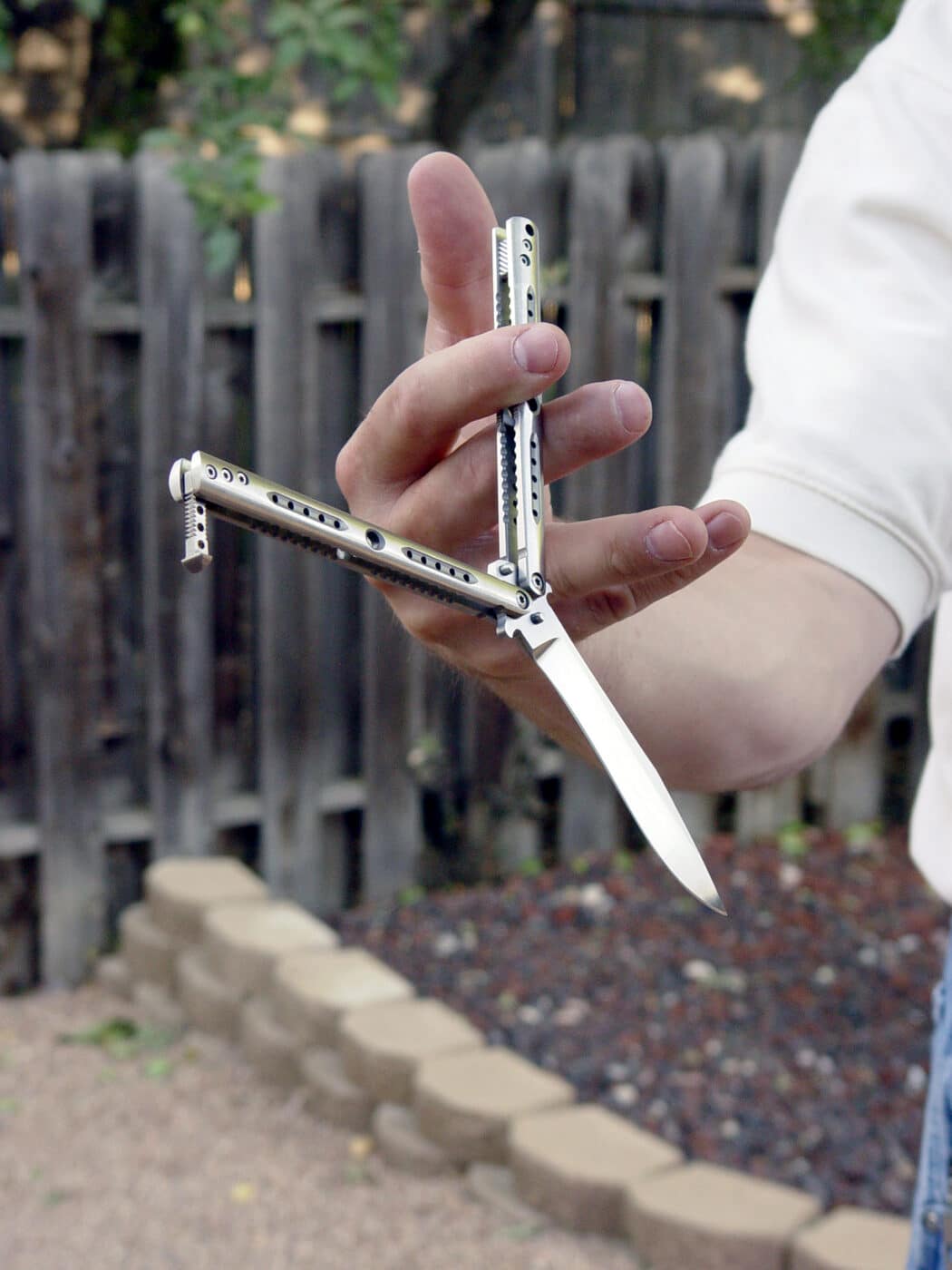
Over the years, my attraction and appreciation of butterfly knives has grown. I have added several more butterfly knives to my collection including the Spyderco SmallFly2, Boker Tactical Balisongs, and Bear OPS Bradley Kimura Butterfly and Bear Song VIII B800. I also wised up and bought a Boker Trainer.
But why the continued seduction by balisongs/butterfly knives? Aren’t they hard to use? Aren’t they easy to cut yourself with? Great questions. Let’s consider them.
What Is a Balisong?
Before the ascendancy of spring-loaded folders, which make a mockery of most knife laws stemming from the 1950s-60s, balisong/butterfly knives offered the convenience/potency of one-handed opening capability.
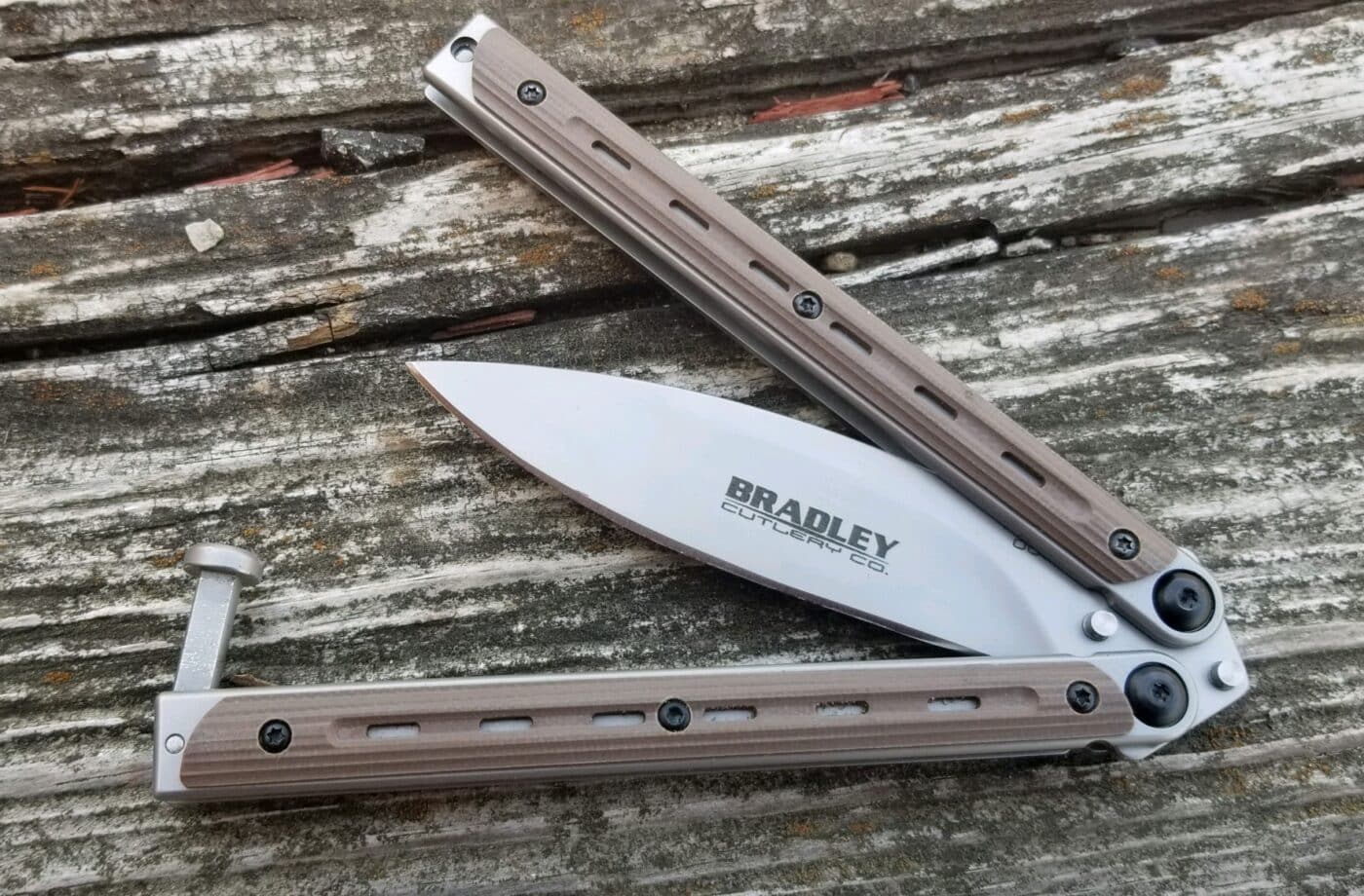
The origin of the balisong-type knives is debated. Balisong or butterfly knives are most associated with the Philippines, dating back to the early 1900s when the blade type was embraced not only by the martial arts community but also as common pocket utility blades.
The Batangas province in the Philippines is most closely associated with the balisong and remains the center of balisong production in that country. Balisong literally means “broken horn,” because the traditional handles were made from animal horn. Historians also point to the 800 A.D. Chinese Tang Dynasty and 1700 A.D. France as other possibilities for balisong origination. The European claim is backed up by actual drawings, and inclusion in cutlery catalogs from the period.
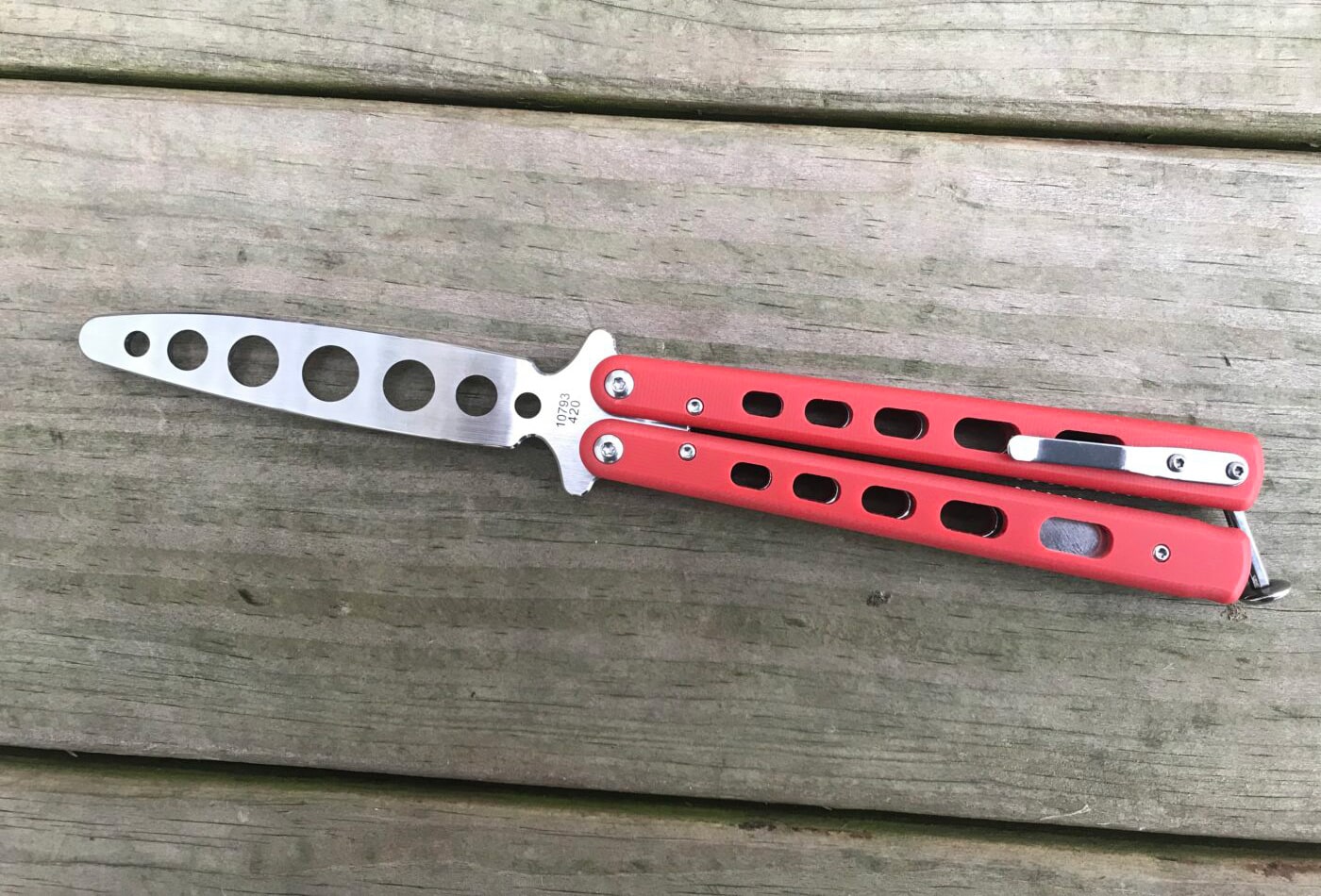
Regardless of origin, the balisong/butterfly appearance in the U.S. is attributed to the Philippine connection. The first balisongs to make it to the U.S. were brought by returning G.I.s after World War II and by immigrating Filipino farm workers.
Unfortunately, many federal, state and local jurisdictions lumped balisongs into the same prohibited category as automatic switchblades and gravity knives. I stress the importance of verifying your local area’s legal stance on the balisong. No need to get legally hemmed up over carrying one, no matter how cool they are.
Butterfly Benefits
I was quick to consult with knife guru Michael Janich on the balisong topic for this article. Michael is the founder of Martial Blade Concepts, a premier personal defense training organization, as well as being Special Projects Coordinator for Spyderco.
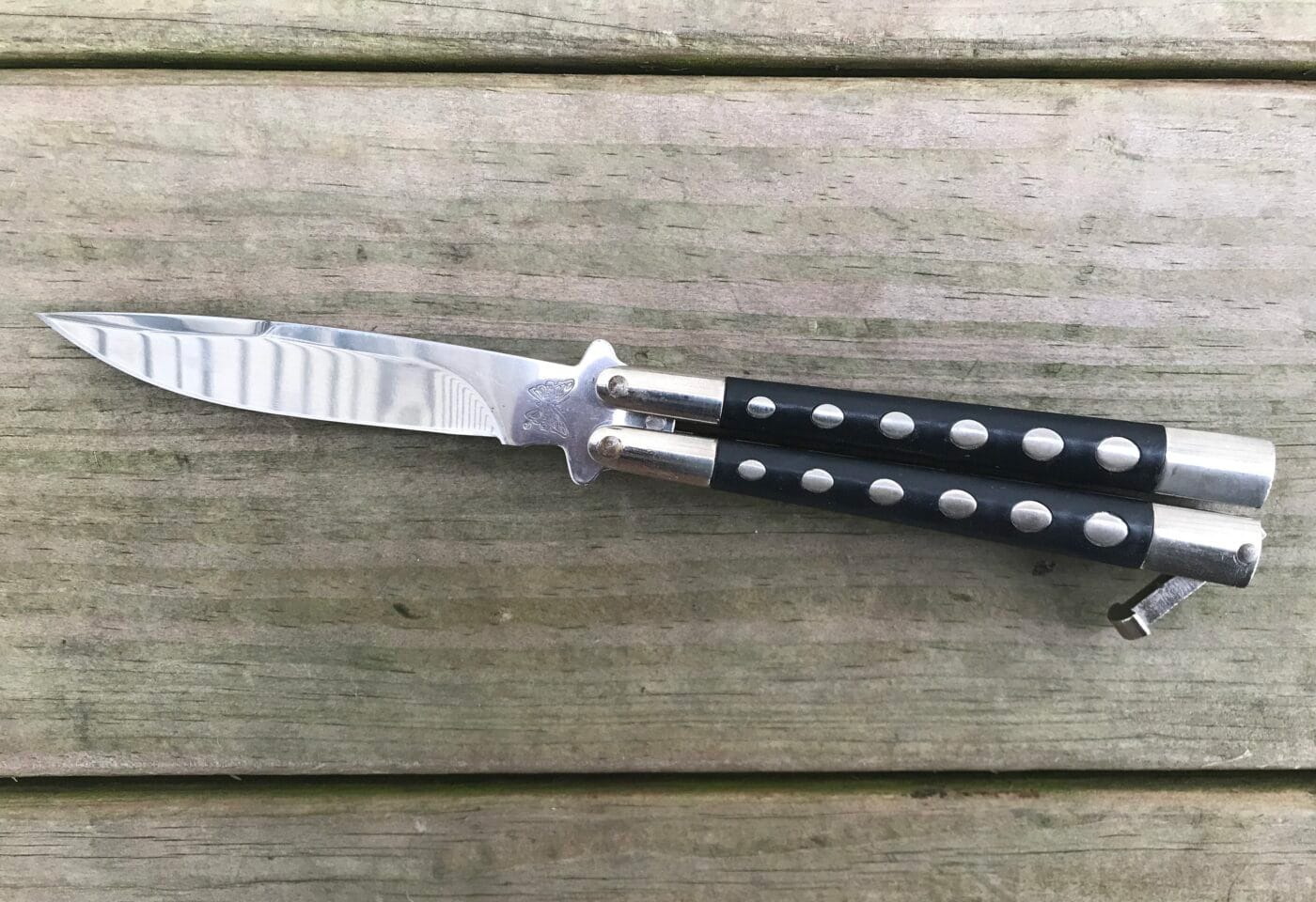
Michael pointed out that the balisong is a basic design with two handles rotating around a tang. Although they look complicated, they are less complicated to manufacture than you might think. Unlike some other folding knife designs, it does not require any springs, and a locking mechanism and ultra-tight tolerances are not necessary. So, it’s possible to make one without sophisticated tooling. Despite this, it is a very strong knife design, either open or closed, thanks to its simplicity.
When closed, the blade is concealed within grooves in the handles i.e., like a basic folding pocketknife. Unlike most folding knife mechanisms, the balisong can even feature double-edged blades and still be carried safely in the pocket since the handles completely enclose the blade when closed.
The encompassed blade design eliminates the need for a sheath, and the shape created by the design means even a balisong with a 4” blade is relatively slim/svelte, easily fitting inside a sock, pocket, boot etc. Measuring by length of blade, a balisong will be significantly lighter than a comparably sized typical folding knife.
How to Use a Butterfly Knife
The balisong’s most noteworthy attributes are countless one-handed opening and closing methods via flip, twist, drop, twirl, etc.
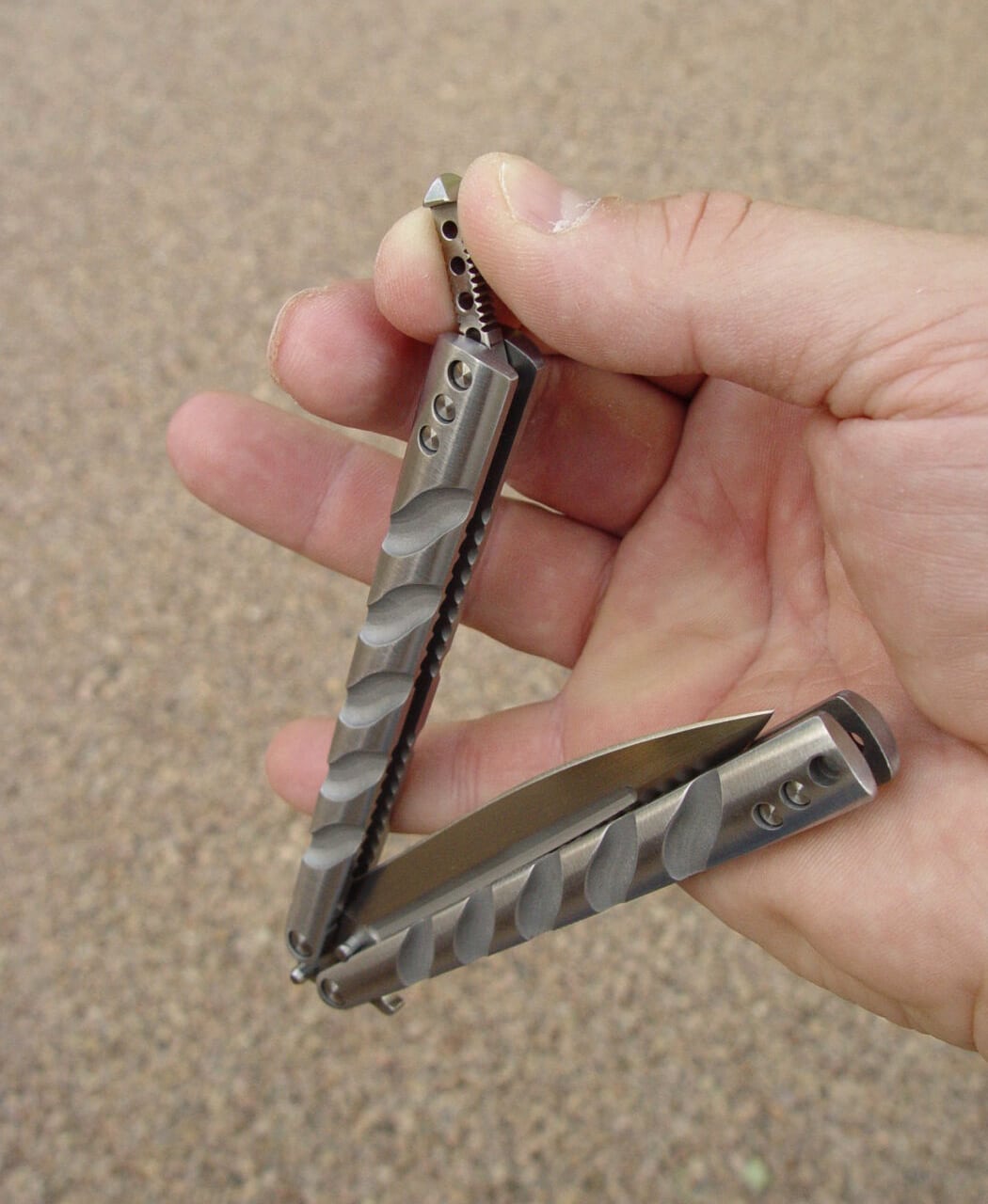
A quick check of the internet will even show “tricks” involving the balisong — something well outside the focus of this article. An early nickname for balisongs was “click-click” knives due to the sound made from the handles when flipping/fanning.
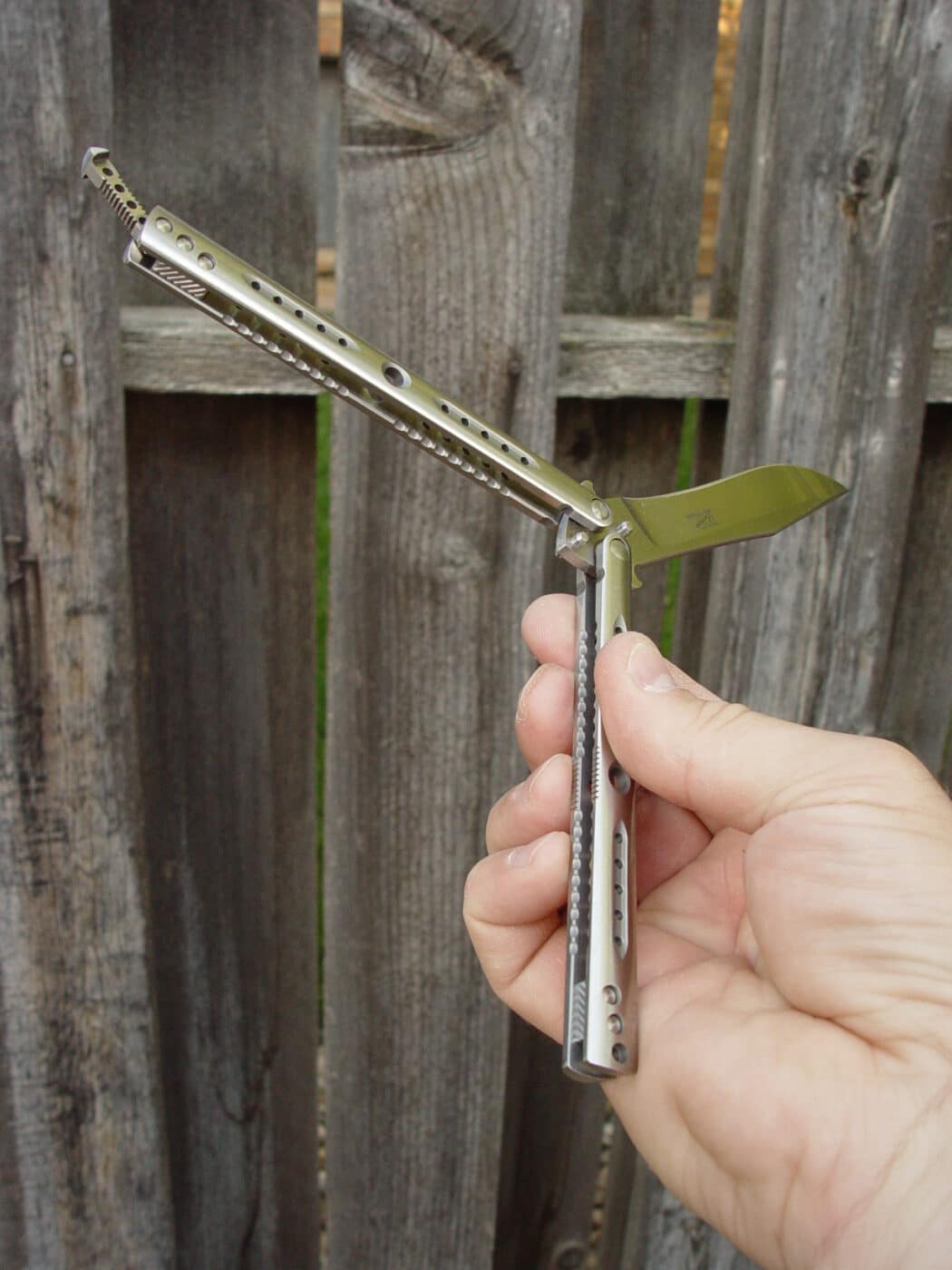
Some will make a case against the balisong based on the level of manipulation required to open. Yes, these are sophisticated opening methods incorporated in more advanced martial art disciplines — but they are not a requirement for effective use. Don’t let the flash of certain presentations mislead you; a balisong can be quiet and simple to deploy by simply dropping the bottom handle and rotating your wrist.
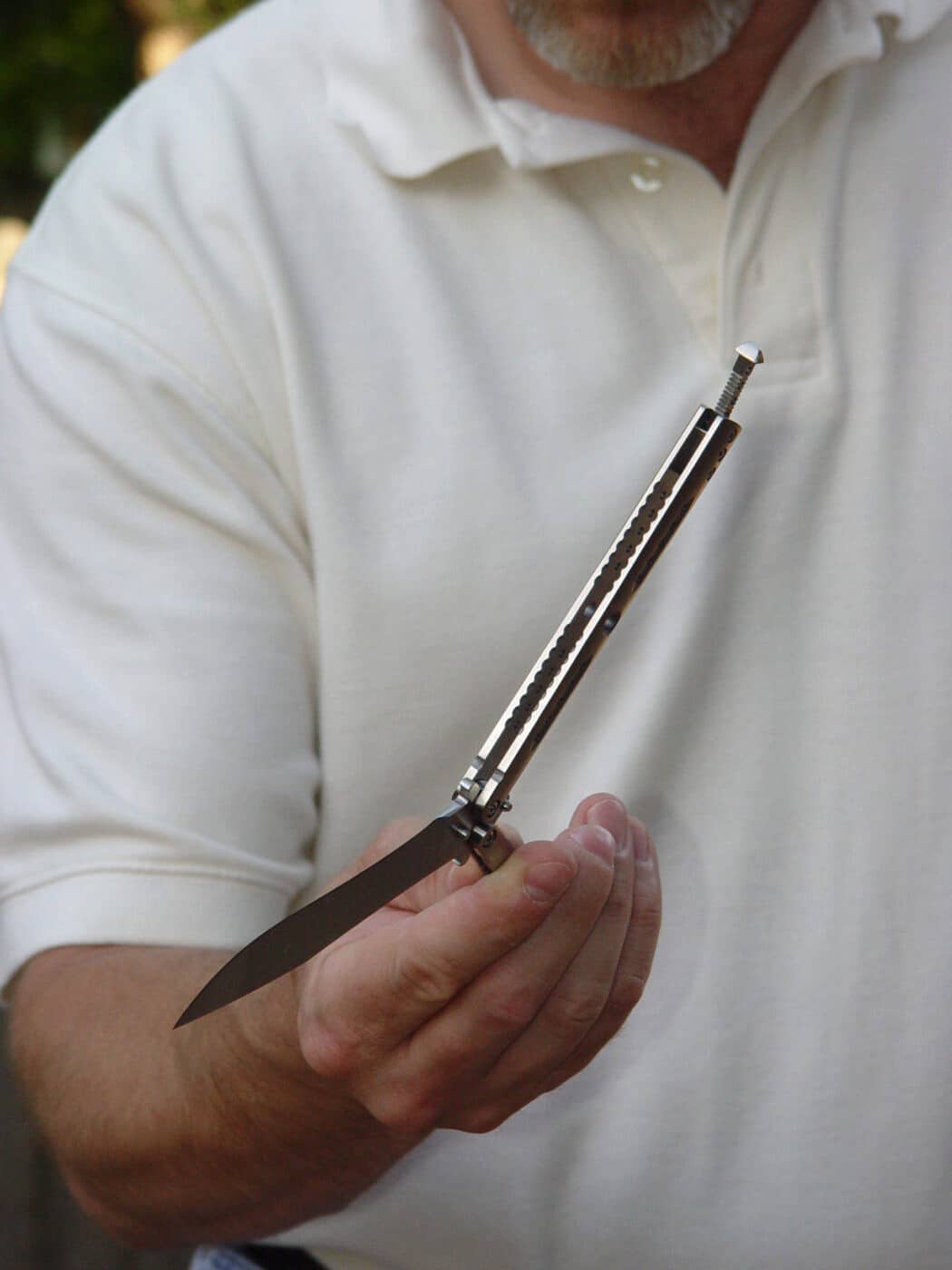
A case can be made that, even closed, the balisong offers some utility as a blunt weapon similar to a Kubotan, enhancing striking or applied to pressure points. Any blade — even a fixed blade — requires training to be effective. Do not fall prey to thinking equipment alone will suffice when it comes to personal defense.
My Choices
While I own multiple balisongs, I chose the Spyderco SmallFly2 and Bear OPS (tactical division of Bear & Son Cutlery) Bear Song VIII B-800 to highlight specific concepts of the balisong knife in this article.
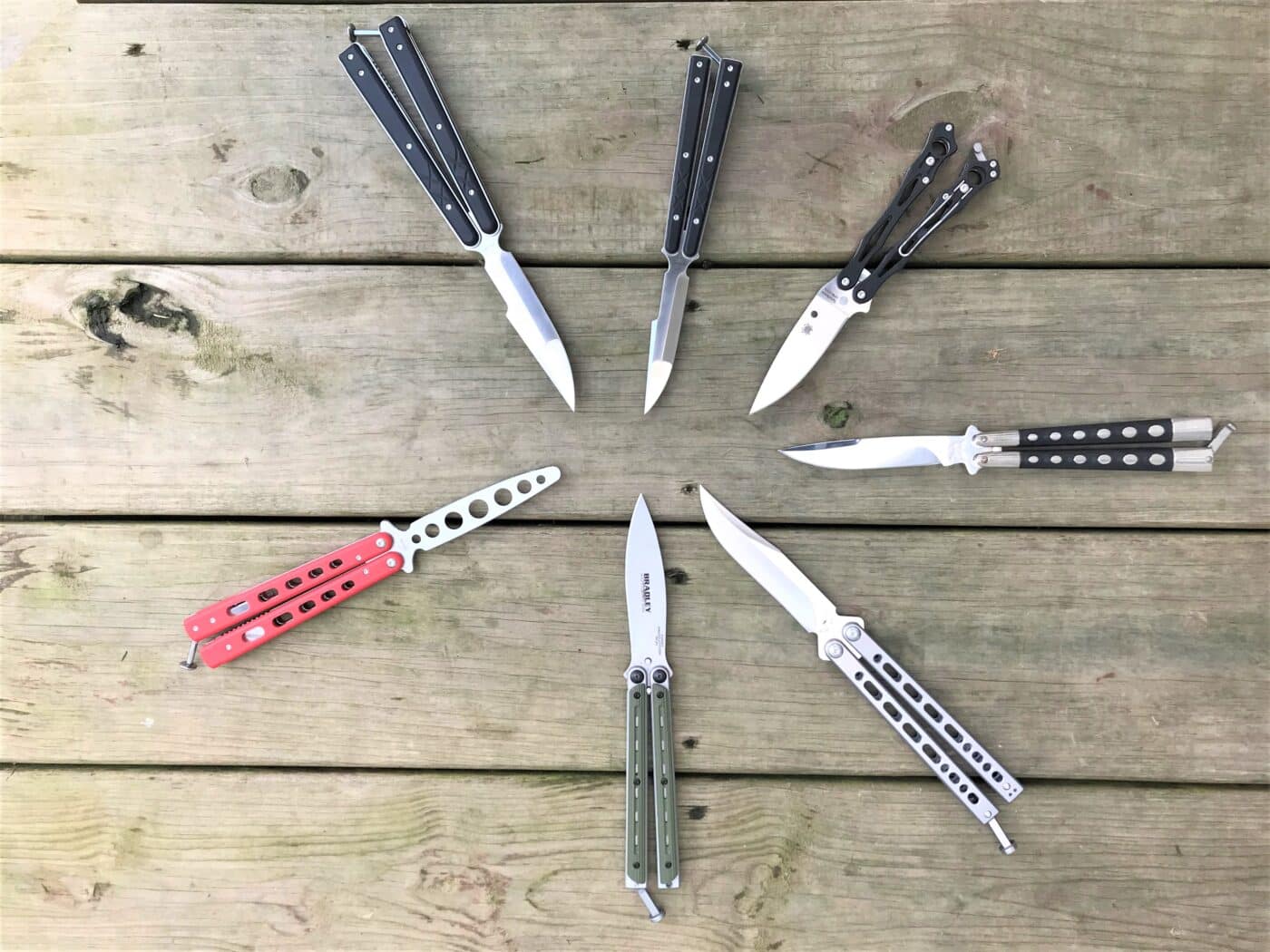
The Spyderco SmallFly2’s aesthetics are defined by skeletonized handles and a 2.82” razor-sharp, flat-ground edge created from CPM S30V stainless steel. The SmallFly2 weighs only 3.4 ounces with an overall length of 7.5” and a closed length of 4.35”. A spring-loaded latch secures the handles together in the closed position, which can be released by squeezing the handles together. A removable wire pocket clip can be attached to either side of the SmallFly2 based on user preference for carry orientation.
The Bear OPS VIII Butterfly features a 4” Bowie-style 154CM blade with a taper-ground edge. The handles are Cerakoted stainless steel. Pivot bearings keep the knife shifting from open to closed. The Kimura measures 5.25” closed to 9.5” open with a weight of 5.1 ounces. The Bear OPS VIII is the more traditional-looking balisong of the two.
I purposely chose the SmallFly2 and Bear OPS balisongs to show the range of possible options. It is important to realize that due to different dimensions and weights each balisong “flips” uniquely. An end user should be aware of this. Balisong blades offer different things to different people — personal defense, discipline of mastering, utility, even entertainment. Each of these makes balisongs well worthy of consideration.
Editor’s Note: Please be sure to check out The Armory Life Forum, where you can comment about our daily articles, as well as just talk guns and gear. Click the “Go To Forum Thread” link below to jump in and discuss this article and much more!
Join the Discussion
Continue Reading
Did you enjoy this article?

 104
104






